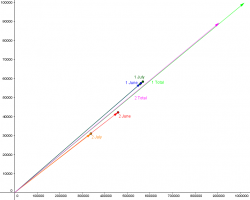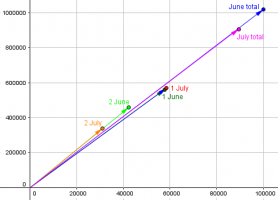Here is general Math/Statistics question that I would like to learn more about. There are two areas/departments where people work and are paid hourly. I am trying to check on my Average Hourly Rate/Wage for the areas and the whole company to see how we are trending.
See table attached context: Between June and July both areas increased AHR by 0.02c and 0.07c respectively. However, when totaling, it's not telling the same story.
Question 1: When totaling the Wages Paid and Hour Worked and calculating AHR, why is July total AHR decreasing vs June? Whereas, both area's July AHR are increasing between June and July.
Question 2: What is the mathematical/Statistical principle that is causing this?
Thanks,

See table attached context: Between June and July both areas increased AHR by 0.02c and 0.07c respectively. However, when totaling, it's not telling the same story.
Question 1: When totaling the Wages Paid and Hour Worked and calculating AHR, why is July total AHR decreasing vs June? Whereas, both area's July AHR are increasing between June and July.
Question 2: What is the mathematical/Statistical principle that is causing this?
Thanks,



